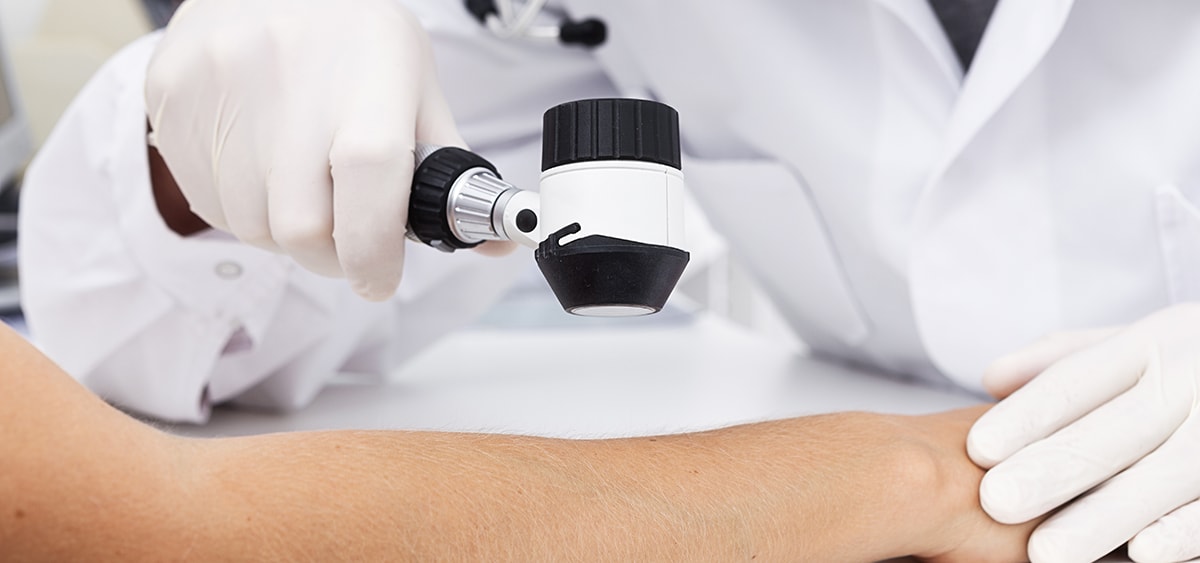
What is Mohs Surgery?
-
Updated: February 25, 2020
Skin cancer is by far the most common cancer in the U.S. The good news is that the two most common types of skin cancer, basal cell carcinoma and squamous cell carcinoma, are very easily treatable if diagnosed early and managed correctly.
Mohs surgery is the gold standard treatment for the vast majority of basal and squamous cell carcinomas, which often occur on visible areas of the body that get the most sun exposure, like the scalp, face, nose, ears, neck, hands, and arms.
“Mohs surgery is the treatment that provides the highest certainty that the skin cancer is completely removed,” said Abhishek “Shek” Aphale, MD, Assistant Professor in the Department of Medicine at Fox Chase Cancer Center. “It also preserves as much healthy tissue as possible, which is important on the face and other places where there is not much tissue to spare.”
Mohs surgery is used for patients with a high risk for recurrence after previous treatment, skin cancers with ill-defined borders, and large or aggressive skin cancers.
How is Mohs surgery done?
Mohs surgery is typically performed on an outpatient basis. Aphale said it is one of the few surgeries that requires almost no preparation—patients can eat and drink normally and, in most cases, take their normal medications prior to surgery. “It is a relatively straightforward surgery, but it is wise to clear about 4 hours of time, although many surgeries take only 2-3 hours,” Aphale advised.
Once the local anesthetic takes hold, the surgeon removes the visible part of the cancer, as well as a thin margin of tissue around and under it, and then looks at it under the microscope to see if the edges are clear. The tissue processing and microscopic analysis is what takes the most time. Patients in Aphale’s care are free to move about during this time, and are welcome to bring refreshments, books, or other things to pass the time comfortably. The removal and analysis procedure is carefully repeated until the last sample is cancer-free and only healthy tissue remains.
With appropriate diagnosis, treatment and follow-up, most of these cancers can be cured with excellent functional and cosmetic results.
Recovering from Mohs surgery
When the procedure is done, the wound is typically stitched together to heal. “There are usually two or more layers of sutures, and the inner ones are absorbable. If non-absorbable sutures are used for the outer layer, the patient will return in a week to two weeks for removal,” Aphale explained. “The head and neck areas heal rapidly, with the wound closing in about a week. Extremities may take a little longer to heal, so I advise patients to minimize activities involving the involved extremity for about two weeks.”
Patients go home with simple instructions on caring for the wound. Few patients have any serious complications, but Aphale likes patients to return in about 4-6 weeks for a brief examination and to address any concerns.
Who performs Mohs surgery?
Mohs surgery is multi-faceted, Aphale said, and it is important to find a surgeon trained in this particular technique because they have expertise in all parts of this procedure.
“I act as the oncology surgeon, the pathologist, and the reconstructive surgeon,” Aphale said. “Mohs surgeons are trained in all of these areas.” Aphale is board-certified in dermatology, specializes in Mohs surgery, and has advanced training to repair and reconstruct wounds following Mohs surgery.
“My priority is complete tumor removal, but I also use specific techniques to ensure that the scar is esthetically pleasing and well-camouflaged into the skin in most cases. In almost all patients, it is very difficult to see the scar a few months after surgery, especially because the face, head, and neck heal so well in general,” he said.
Reducing your skin cancer risk
People who have had skin cancer have an increased risk of getting it again. “If you’ve had sunburns in the past, you should have a baseline skin check and ask your dermatologist how often to have follow-ups. If you’ve had skin cancer in the past, your dermatologist will probably recommend having your skin examined at regular intervals,” said Aphale, who added a reminder that the sun is one of the biggest factors in how skin cancer starts.
“We want people to be smart about sun exposure and being protected. Avoid the mid-day sun and wear a broad-brimmed hat and sun-protective clothing,” he said. “Remember to wear sunscreen every day because we are exposed to UV rays even when we are in the car or near a window. Making a few simple lifestyle changes can make a big difference.”
Learn more about Dermatology Services provided at Fox Chase Cancer Center.
